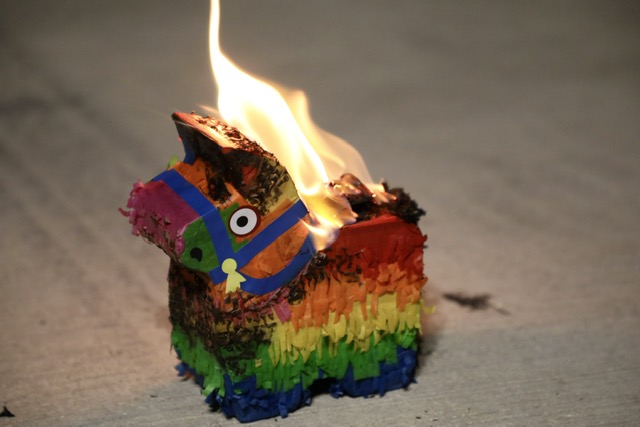
By Ana Ruiz Brictson | Staff Writer
When the holidays arrive, many countries have their own traditional ways of celebrating the same festivities. More than 15 percent of Baylor’s undergraduate student body identifies as Hispanic/Latino, according to Baylor’s Office of Institutional Research. While many Latin American families enjoy traditional Christmas activities, there are many cultures that have their own plans for how to spend the season.
Guatemala City, Guatemala, sophomore Sofia Orellana said there is a special tradition in her country at the beginning of December called La Quema del Diablo (Burning of the Devil). For this custom, Guatemalan citizens join together to burn newspapers, trash and other items people want to throw in.
“It’s basically just a release of all the bad spirits,” Orellana said. “We burn trash, and there’s piñatas, basically just to release all the bad things that are coming for the rest of the holidays.”
Orellana also said La Quema del Diablo is only a religious tradition for those who want to associate it as such.
“Basically, whatever you attach to the bad things that you want to release — whether it be religious or just experiences that you have — people use it for different reasons,” Orellana said.
Orellana said Guatemala families gather on Christmas Eve and stay up until midnight to greet Christmas Day with fireworks.
“It’s almost like another Thanksgiving dinner,” Orellana said. “It’s always spent with family. We’re really close together, and I don’t see anyone else but my family in the whole two days of the 24th and 25th.”
Monterrey, Mexico, sophomore Emilio Espinosa said in his country, there are different celebrations during the holidays. One of the traditions is Las Posadas (a hosting celebration), which takes place from Dec. 16 to Dec. 24. Each night, there is a procession commemorating Mary and Joseph’s quest for shelter ahead of the birth of Jesus. Participants make stops at various homes, singing songs and reading scripture until they reach the designated home in which they will continue the festivities inside.
“We celebrate with family on the 24th or days before to be able to celebrate with both sides of the family,” Espinosa said.
Despite sharing similar religious beliefs, many countries embrace unique traditions to celebrate the holidays in accordance with their culture. Now as the semester comes to a close, students look forward to embrace their typical festivities whether it be releasing the negativity of the past or simply exchanging gifts together.




